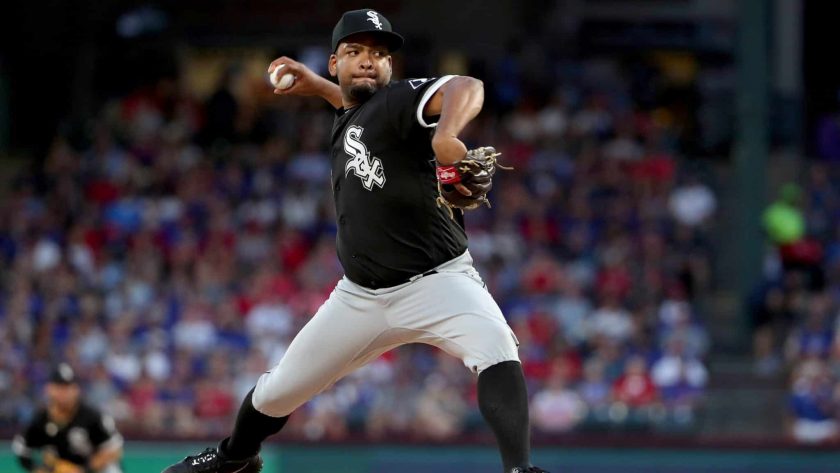New York Mets should keep an eye on Odrisamer Despaigne this season

With nearly everyone’s attention focused around the KBO, there’s one pitcher who could help the New York Mets in 2021.
[sc name=”thomas-hall-banner” ]With Major League Baseball paused, teams haven’t been able to scout international players over the last few months. But since the Korea Baseball Organization is now underway, the New York Mets could utilize this time to observe one of the foreign league’s most intriguing pitchers.
While this is just his first season in Korea, Odrisamer Despaigne, 33, will likely attract a ton of attention from many MLB teams in 2020. Despite his age, the right-hander will become a free agent this winter and could make a strong comeback in MLB.
Before Despaigne signed a one-year deal with the KT Wiz this past offseason, the veteran hurler played six seasons in North America, having spent time in the Padres, Orioles, Marlins, Angels, Reds, and White Sox organizations.
Unfortunately for the Cuban native, San Diego provided him with misguided information during his second season in the majors. This led to his terrible performance during the 2015 campaign.
As a rookie in 2014, Despaigne produced a 3.36 ERA, 3.74 FIP, 4.01 xFIP, 1.21 WHIP, .232 OPP AVG, 16.1% strikeout rate, 7.9% walk rate, 52.1% ground ball rate, 7.1% home run to fly ball rate, and 0.8 fWAR rating over his 96.1 innings pitched.
For the former Padre, the success he had during his rookie season should be credited towards his low-90s sinker and cutter, mid-80s slider, and mid-70s curveball. Each of these pitches allowed him to limit home runs and walks as well as generate plenty of ground balls. They additionally assisted him in producing a respectable number of strikeouts.
In 2015, the Padres mistakenly advised Despaigne to increase the usage of his four-seamer, which he did by 17.4%. This forced him to reduce the usage of his slider by 9.7% and his cutter by 2.2%.
As a result, the 6-foot hurler recorded a miserable 5.80 ERA, 4.77 FIP, 4.37 xFIP, 1.38 WHIP, .281 OPP AVG, 12.6% strikeout rate, 5.9% walk rate, 50.5% ground ball rate, 14.8% home run to fly ball rate along with a -0.2 fWAR rating over his 125.2 innings pitched during the 2015 campaign.
To make matters worse, after the 2015 season, Despaigne was traded to the Orioles, an organization that’s always struggled with developing pitchers. Following the mistakes made by San Diego, Baltimore moved the veteran arm to the bullpen. They also wanted him to continue using his fastball as his primary pitch during the 2016 campaign.
Over his 16 appearances as a reliever, Despaigne’s struggles continued. He ultimately created a 5.60 ERA, 5.09 FIP, 5.55 xFIP, 1.72 WHIP, .302 OPP AVG, 13.9% strikeout rate, 12.3% walk rate, 38.2% ground ball rate, 9.7% home run to fly ball rate, and -0.2 fWAR rating over his 27.1 innings of work.
Luckily for Despaigne, the Marlins claimed him just before the end of the 2016 season. While Miami couldn’t provide him with a chance to pitch in the playoffs, they assisted in the fixing of his repertoire in 2017 by advising him to increase the usage of his cutter.
After he threw this pitch just 3.2% of the time in 2016, the former Marlin increased the usage of his cutting fastball by 27.9% during the 2017 campaign. In turn, his cutter generated a .274 SLG, .392 xSLG, .300 wOBA, 35.7% ground ball rate, and 36.1% chase rate (career-high).
During the 2018 season, Despaigne built off the progress from his first full year in Miami and endured his best performance since his rookie campaign. Over his three outings as a reliever in May of that year, he utilized his four-seamer just 11% of the time, having relied on his sinker, cutter, and slider.
During that time frame, the soft-throwing righty produced a 3.18 ERA, 3.16 FIP, 4.33 xFIP, 1.77 WHIP, .240 OPP AVG, 20.7% strikeout rate, 13.8% walk rate, 57.9% ground ball rate, and 26.3% hard-hit rate over 5.2 innings pitched.
Unfortunately, the Angels, Reds, and White Sox all wanted Despaigne’s four-seamer to be his primary pitch. This led to horrendous tenures with all three organizations. With that said, he’s begun to regain his confidence on the mound in the KBO and has reverted back to his earlier form, focusing on his sinker, cutter, slider, and curveball.
On Opening Day in Korea, Despaigne completed six innings and allowed just one run on four hits with eight strikeouts. In particular, the right-hander has increased the velocity on his cutter. It now ranges between 93-95 miles per hour and he was utilizing it as his primary strikeout pitch.
Here’s Despaigne’s final inning of work from his first start of the 2020 campaign:

In order to be successful, Despaigne will likely need to focus on just four or five pitches this season — his sinker, cutter, slider, curveball, and potentially his changeup. Since he now features a mid-90s cutter, there’s no need to keep his four-seamer in his arsenal anymore.
If the former major-league hurler can limit home runs and walks while producing a high number of ground balls this season, he’ll likely remain a starter. He could thus command a multi-year deal from a handful of MLB teams next offseason.
From the Mets’ perspective, three pitchers from their starting rotation are set to enter the free-agent market next winter — Marcus Stroman, Rick Porcello, and Michael Wacha. In addition, it’s very unlikely that Noah Syndergaard will be fully recovered from Tommy John surgery by next spring.
With those concerns in mind, Despaigne could fill out the rest of the Mets rotation in 2021 and ultimately help fill the gap in their staff until a few of their top pitching prospects are ready for the big leagues.






